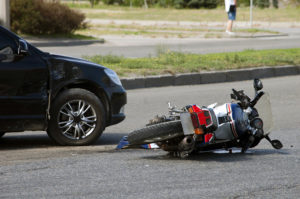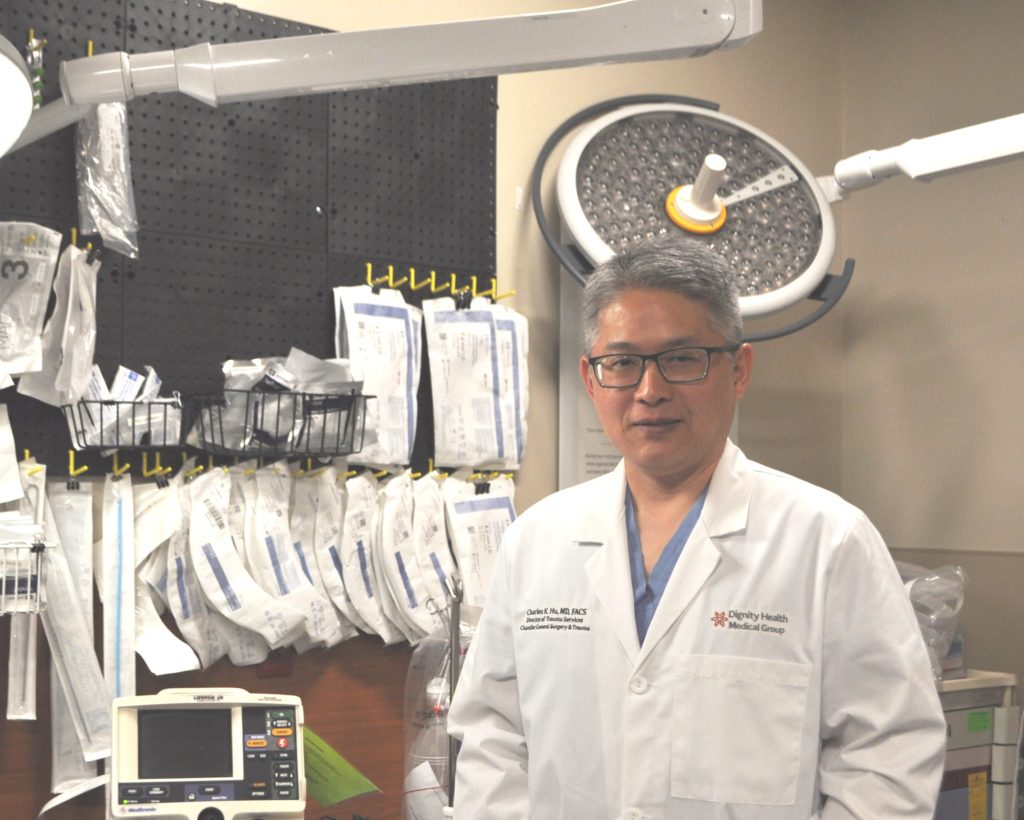 By Joyce Coronel
By Joyce Coronel
Dr. Charles Hu, director of Dignity Chandler Regional Medical Center’s Level-1 Trauma Center, has a message for motorcyclists tempted to jump on without taking the customary— and potentially lifesaving—precautions: Don’t forget to wear your helmet.
“My message to everyone out there riding a motorcycle is that prevention is the key and having a helmet and protective gear helps save you so you can ride another day.”
Hu says he’s seen patients who were involved in major crashes but who walked away from the hospital because they were wearing a helmet. He’s also had patients who were involved in less-serious crashes but experienced life-changing injuries.
“They have a head injury and then they realize, ‘I should have had a helmet on. Then I wouldn’t be here.’ I can tell you this: Those who get injured don’t want to be in the hospital. They want to be out there riding their motorcycle.”
Trauma surgeons at Chandler Regional are encouraging greater roadway safety and awareness in hopes of curbing the rising number of devastating injuries related to motorcycle and motor vehicle accidents.

Motorcycle and motor vehicle injuries are the most frequent injury seen in the hospital’s Level-I Trauma Center, which treats some of the Valley’s most critically injured patients.
“Currently in Arizona, only motorcycle operators and riders under 18 must wear a helmet. This is one of the problems we hope to change,” says Wendy Otten, RN, Chandler Regional’s trauma program manager, who also serves on the executive board for Arizona Motorcycle Safety and Awareness Foundation.
“However, it’s not the only problem facing motorcyclists today. One of the things that people don’t realize is that these accidents aren’t always the motorcyclist’s fault. Distracted driving is an increasing problem, so we also urge our community members to understand that everyone on our roadways needs to be extra aware of their surroundings, share the road, and remember that their cell phones can wait.”
Dr. Hu also cited distracted driving as one of the factors that lands patients in the trauma center. Driving while texting or otherwise distracted “puts everybody in jeopardy,” Hu said.
“When you’re driving at 60 miles an hour, you could drive the length of a football field in like three seconds and you have no idea how fast, how much distance you can cover.”
Hu has seen his share of the tragic—and preventable—consequences of distracted driving.
“We see patients that overcorrect because they were doing something else, and they end up crashing into other cars. Then there are people who are riding on motorcycles, and a car swerves into their lane because the driver was distracted.
“Distracted driving puts everybody in danger. It’s not worth it.”
The number of distracted driving wrecks and deaths has skyrocketed over recent years. Statistics from the National Highway Traffic Safety Administration note that nationwide in 2015, distracted driving was responsible for nearly 3,500 deaths, more than 3,000 fatal car wrecks and 391,000 injuries.
Motorcycling also continues to soar in popularity both as a recreational activity and an everyday mode of transportation, with more than 206,000 registered motorcycles in Arizona. According to the Governor’s Office of Highway Safety, Arizona averages more than 3,000 motorcycle crashes each year and approximately 130 motorcycle involved fatalities.
“We see far too many motorcycle-involved deaths and car wreck-related injuries that could have been prevented. In fact, we estimate having treated an average of one motorcycle injury-related death per month in 2018,” Hu said.
“Clearly, there is a crucial need for both roadway safety and motorcycle awareness.”

